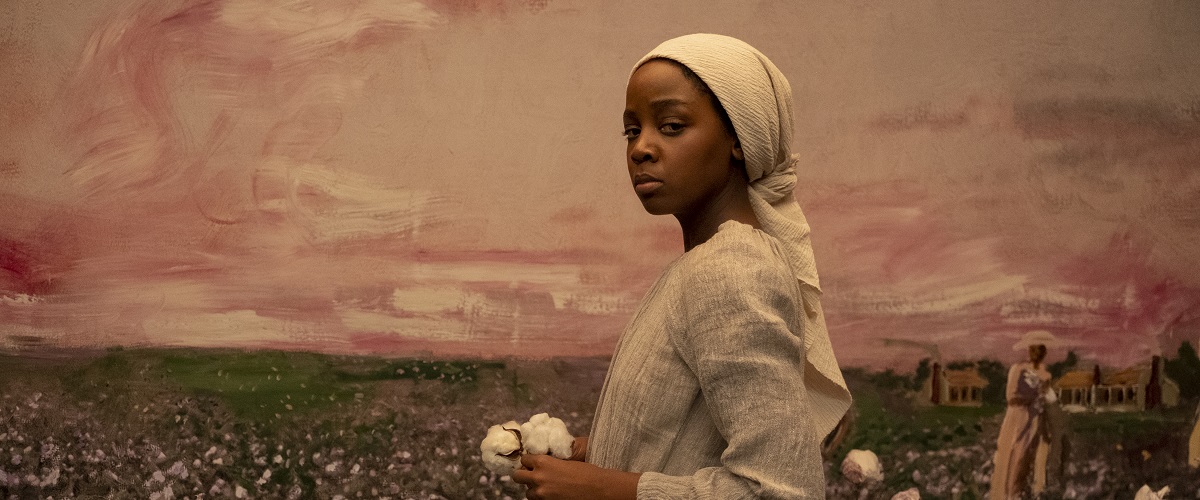
On Twitter a few days ago, I expressed my astonishment and glee over the fact that the great Barry Jenkins had made a show that we could just, like, turn on the TV and watch. No paying for a ticket. No standing in line. No waiting weeks or months before it even landed in a theater Baltimore. What a time to be alive, indeed.
For those who don’t know, Jenkins is the auteur behind Moonlight and If Beale Street Could Talk (and Medicine for Melancholy before that). His films are lush, soulful, yearning, urgent, and unmissable.
A lot of times when a famous auteur “directs” a TV show, he drops in for an episode or two and then lets other directors handle the heavy lifting. Not so for Jenkins’ newest project, an adaptation of Colson Whitehead’s Pulitzer-prize winning 2017 novel, The Underground Railroad. Jenkins directed all ten episodes, in a clear labor of love. What’s more, Amazon Prime “dropped” all the episodes at once, last Friday. Binging was possible. And binge I did.
But I’m here to say: Don’t be like me. The series is everything I hoped it would be: gorgeous, terrifying, provocative, brutal, thrilling, devastating. It’s also extremely intense. There’s been a lot of talk lately about Black Misery Porn, for lack of a better term—that is, when even well-intentioned films and TV series show us Black horror and pain in a way that feels excessive, if not exploitative. Jenkins has stated that he knew he was taking a chance of falling into that trap when he adapted the novel, but he had to make it.
The novel had moved him deeply when he read it and it became something of a personal obsession. Of course, he trusted himself—as he should have. Jenkins is too much of a radical empathist to make anything that could possibly be seen as exploitative. Plus, his filmmaking gifts are such that he knows when to watch and when to turn away. It’s also important to note that The Underground Railroad is actually a book—and now series—about Black excellence, about Black people finding the ingenuity and the wherewithal to escape the shackles of slavery, prop each other up, survive, and, in some cases, even thrive. In that sense, it’s the opposite of exploitation.
That said, it’s a lot. The story follows the saga of Cora (remarkable Thuso Mbedu), who starts out as a slave on a plantation in Georgia and manages to escape via an underground train (this is the conceit of the book, that the Underground Railroad was an actual underground train), all while trailed by a complex, tortured, and ultimately malicious slave catcher named Ridgeway (Joel Edgerton, incredible here).
One of the film’s most curious and compelling characters is Homer (Chase Dillon), Ridgeway’s grim-faced, pint-sized sidekick. They never say how old Homer is, but he appears about 9 or 10. He’s always dressed formally, in a three-piece wool suit with a bow-tie and bowler hat. He’s preternaturally serious and still for a child. He’s also Black, and while not Ridgeway’s slave, he is not his son, either. More like an employee. Still, Homer is utterly devoted to Ridgeway—and willing to do his bidding, even when that bidding is a betrayal of his own people. (One thing the series suggests is that there are some people who just take to violence—Ridgeway is certainly one of them. Homer may indeed be another.)
The first episode is particularly hard to watch as we see Cora get brutally whipped and another male slave get tortured and literally immolated as a form of entertainment to delighted plantation guests. Cora manages to escape with her earnest, optimistic suitor named Caesar (Aaron Pierre)—a man who secretly taught himself to read and write, against the rules of the plantation—and they land in South Carolina. As the second episode starts, it seems that they’ve found a paradise of sorts—there are English classes and grand balls and Cora can freely walk the streets in her newest finery. But there is something sinister afoot. One thing the series makes clear—Black people can never depend on white people to give them their freedom. They must take it themselves.
The series has no let up. Every time we think Cora has found some safety or prosperity—a chance of peace or even romance—violent disruption lies ahead. It’s horrible to watch someone we’ve grown to love be dehumanized this way. But here, Jenkins does not turn away. We must feel the full depth of Cora’s misery, of the brutality of those who seek to enslave and torture her.
And this one of the reasons why I don’t recommend binging it. As a viewer, it’s important to sit with what happens to Cora, both good and (mostly) bad. Digest it. Absorb it. And, yes, recover from it. It’s also important for us to appreciate the painterly beauty of Jenkins’ imagery. This is a meticulously crafted series, a work of intentionality and care—and it feels dismissive, bordering on disrespectful to rush through it. So, by all means, watch The Underground Railroad now. But take a few days off between episodes. It’s what Jenkins—and Cora—deserve.
